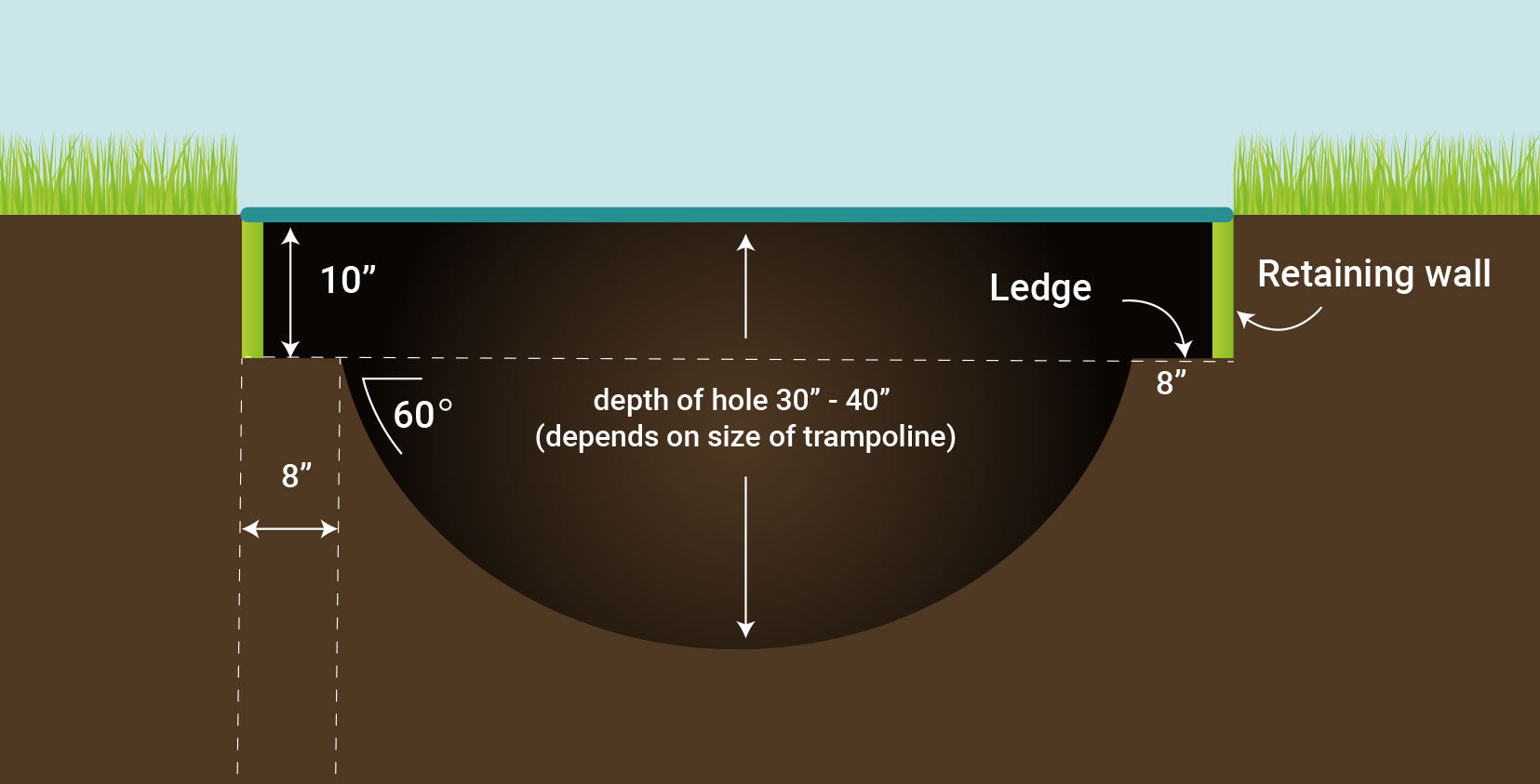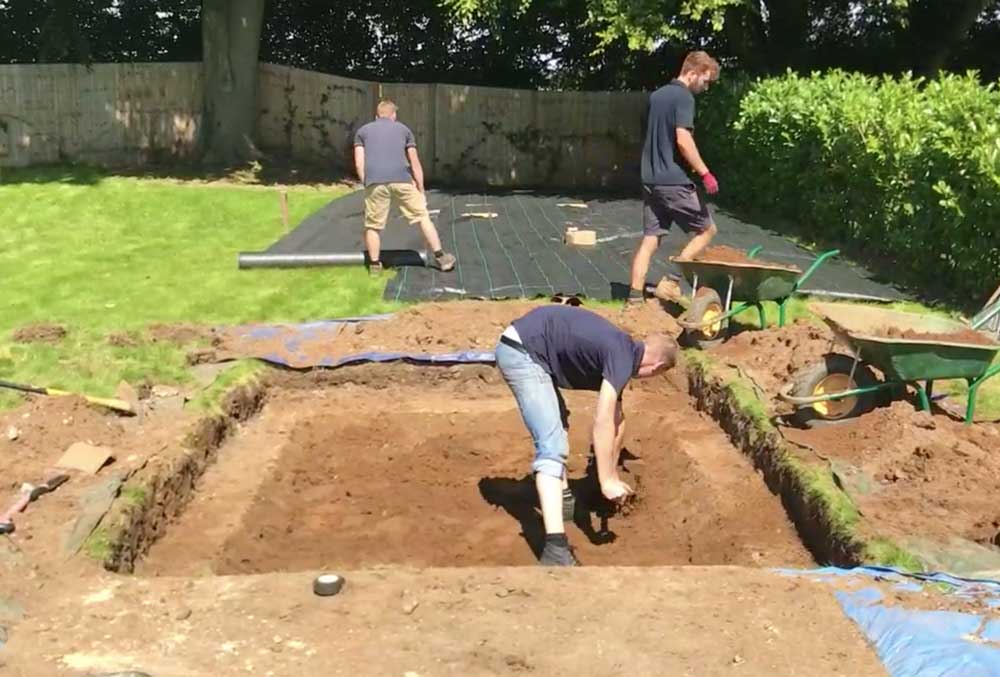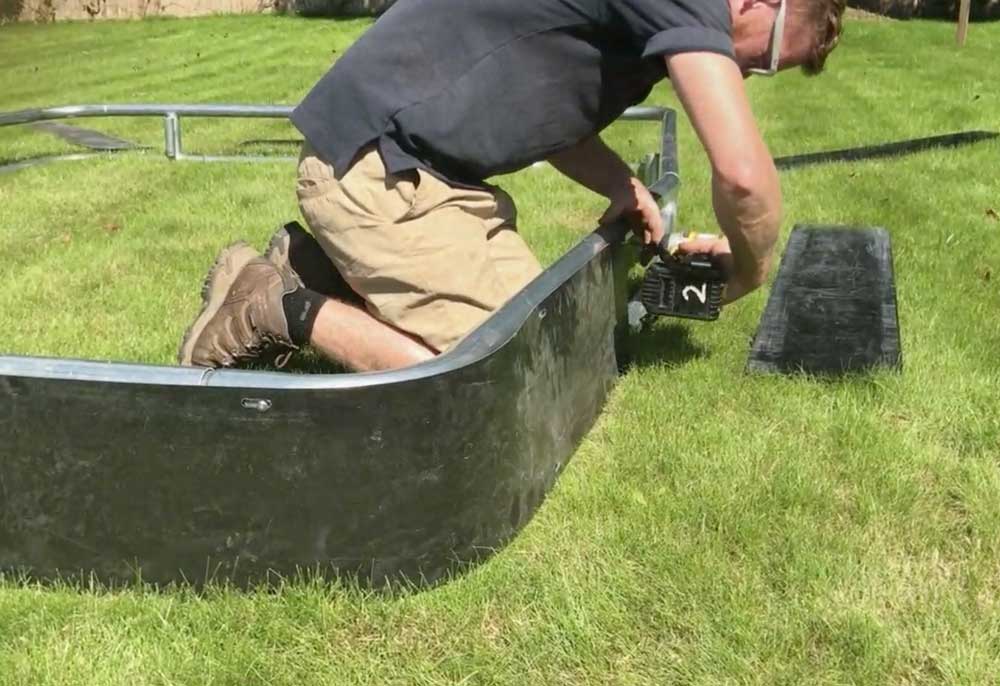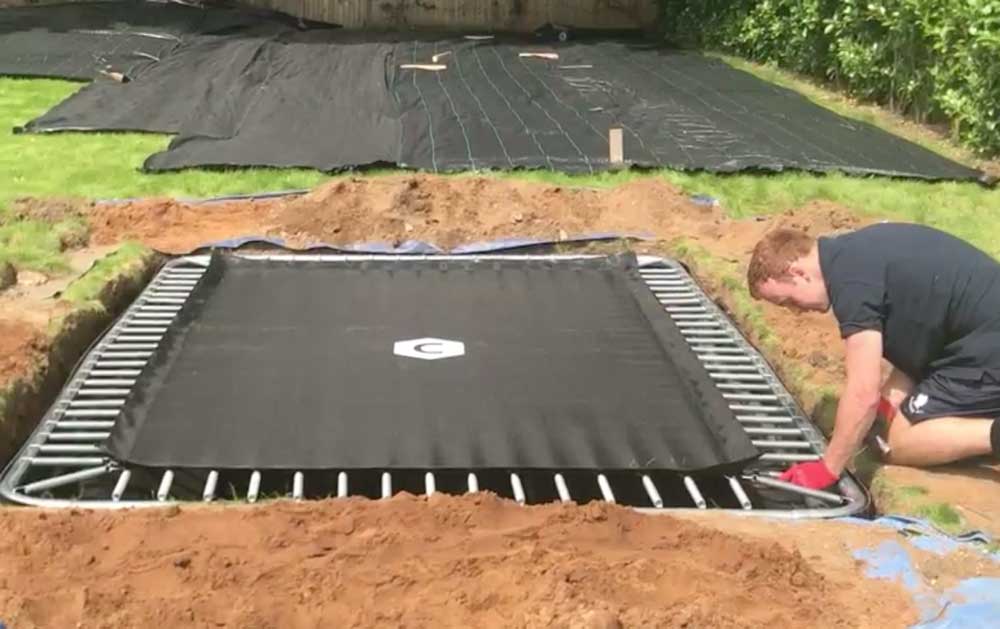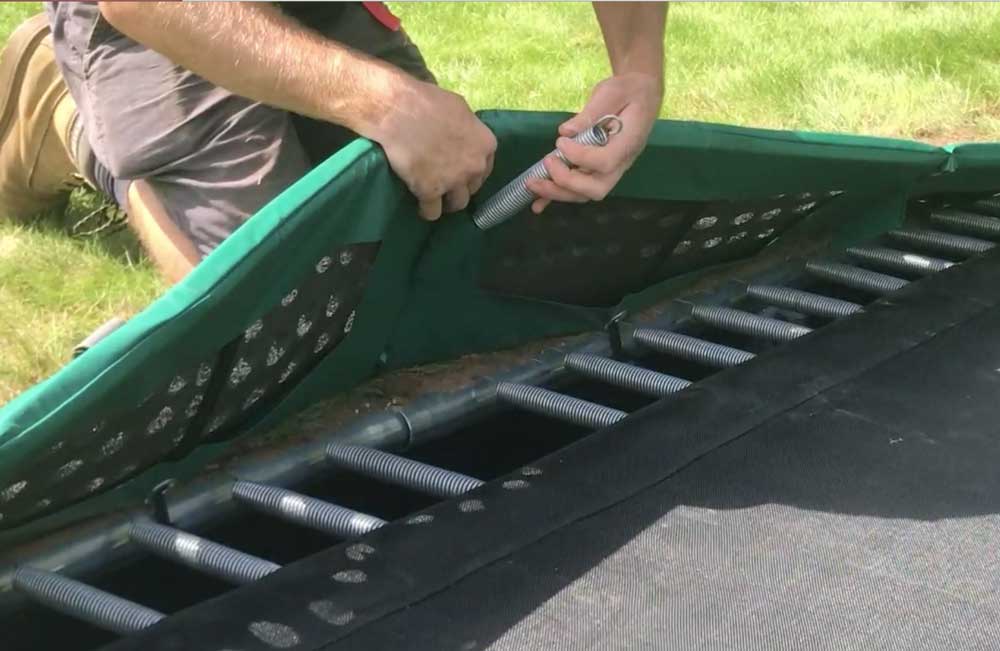Mark out a hole that is a few inches wider in diameter than your trampoline. This is to give you a little extra room when you place the trampoline in the hole.
Dig out 10 inches of soil evenly across the entire hole. Then dig an inner hole in the middle that is 2ft less in diameter than the trampoline size in a bowl shape to a depth of 40 inches for the 17ft x 10ft, 36 inches 3ft for 12ft and 14ft trampolines and 2ft 6 inches for 8ft and 10ft trampolines. This will leave a ledge onto which the trampoline frame will sit.
TOP TIP
It's hard to be precise with the hole measurement - the extra few inches will make it easier for you. This extra space will be back-filled at the end. Keep some of your excavated top soil close by the hole for back filling.


